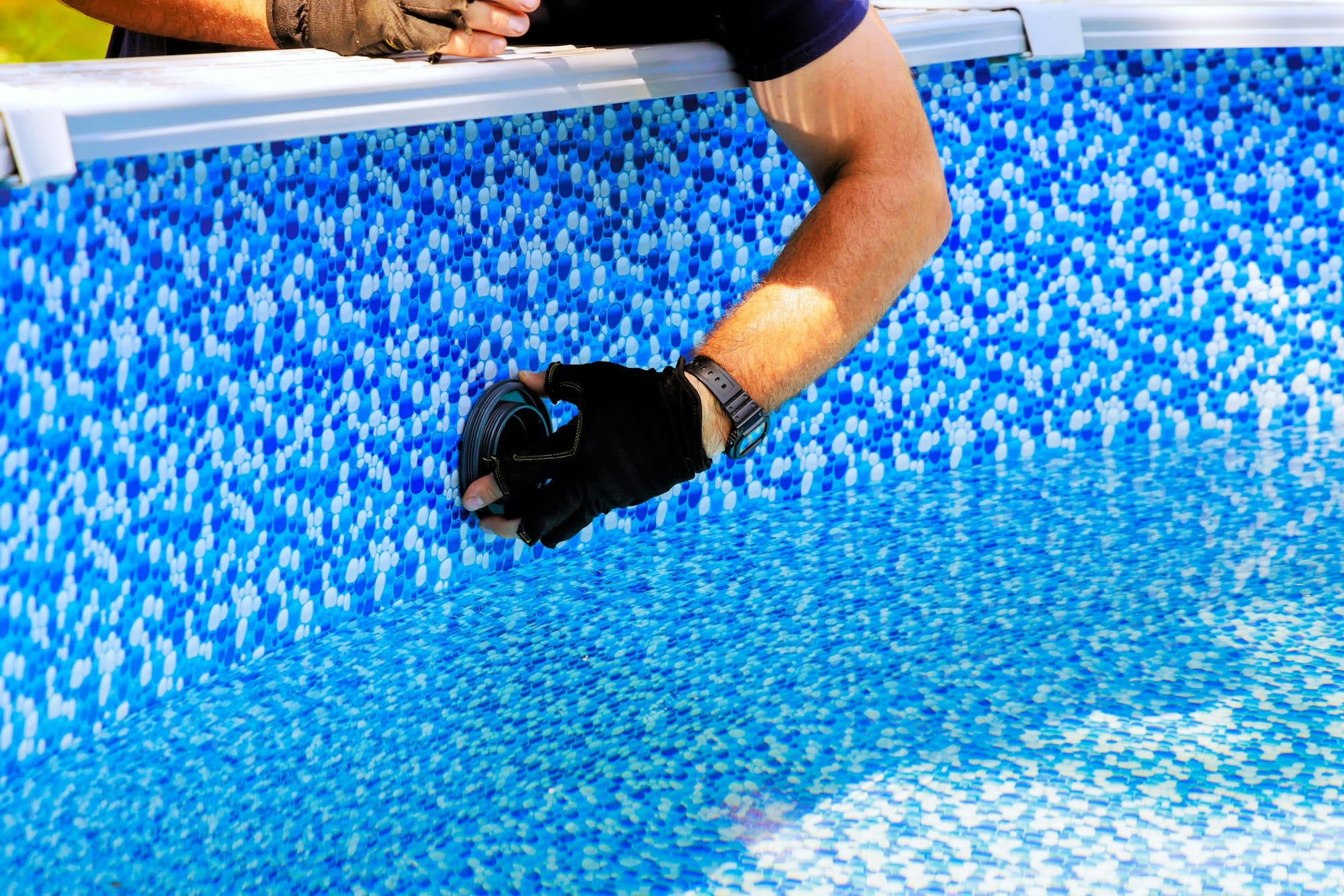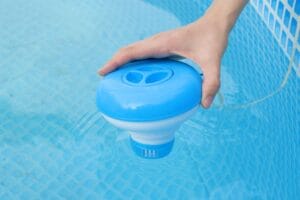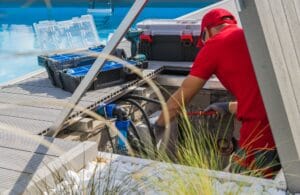What Is a Salt Chlorinator and How Does It Work?
As a pool owner, you’re likely always looking for ways to keep your pool clean, safe, and easy to maintain. One option that’s become popular in recent years is the salt chlorinator, a device that uses salt to create chlorine for your pool water. This method offers a gentler, more eco-friendly approach to pool sanitation, and it has many benefits for pool owners like me who want a simpler, more enjoyable swimming experience. But what exactly is a salt chlorinator, and how does it work? Let’s dive in!

What Is a Salt Chlorinator?
A salt chlorinator is a device that converts regular salt into chlorine through a process called electrolysis. It’s designed to sanitize your pool by producing a steady, natural supply of chlorine, keeping the water clean and free of harmful bacteria, algae, and other impurities.
Unlike traditional pool systems, which require you to manually add chlorine or other chemicals, a salt chlorinator automates the process, delivering the right amount of chlorine as needed. This means less time spent on maintenance and more time to relax and enjoy the pool.
In short: With a salt chlorinator, you’re still getting the benefits of chlorinated water, but in a way that’s easier on the eyes, skin, and even your pool equipment.
How Does a Salt Chlorinator Work?
The magic of salt chlorinators lies in the process of electrolysis. Here’s a simple breakdown of how it works:
1. Adding Salt to the Pool
• First, you’ll add a specific amount of pool-grade salt directly into the water. The concentration is quite low—about the salinity level of a human tear—so the water doesn’t taste salty like seawater but instead feels softer and more refreshing.
2. Water Circulation Through the Chlorinator Cell
• As your pool water circulates, it passes through the salt chlorinator cell. This cell contains special metal plates, often coated with a material like ruthenium or titanium, which are essential to the electrolysis process.
3. Electrolysis: Turning Salt into Chlorine
• When the slightly salty water flows through the chlorinator cell, an electric current passes through the plates, causing a reaction that converts the salt (sodium chloride) into chlorine (hypochlorous acid).
• This chlorine is the same sanitizing agent found in traditional chlorine pools, and it actively destroys bacteria, algae, and other contaminants in the water.
4. Chlorine Circulates to Sanitize the Pool
• Once the chlorine is created, it mixes back into the pool water, continuously sanitizing it as it circulates. As the chlorine breaks down after reacting with contaminants, it eventually turns back into salt, which the chlorinator can then convert back into chlorine. This cycle can repeat, keeping your pool water clean without the need for constant chemical additions.
In essence: The salt chlorinator transforms the salt into chlorine, which cleans your pool, and then reverts back to salt, creating a natural loop that keeps the water sanitized.
Benefits of Using a Salt Chlorinator
So, why should pool owners consider switching to a salt chlorinator? Here are some key benefits that I’ve found particularly appealing:
1. Consistent Chlorine Levels
• Salt chlorinators provide a steady, controlled release of chlorine, which means you avoid the harsh spikes and dips in chlorine levels common with traditional chemical applications. This keeps the water consistently clean and clear, which is especially helpful during peak swimming season.
2. Gentler on Skin and Eyes
• Salt-chlorinated water is much gentler on the skin, eyes, and hair. I’ve noticed that saltwater pools tend to have a softer, silkier feel, which makes swimming more enjoyable and less irritating for those with sensitive skin or allergies.
3. Reduced Maintenance and Costs
• While there’s an initial investment in the salt chlorinator system, it can save money over time because you’ll need fewer chemicals and less maintenance. There’s no need to purchase, store, and add chlorine manually, which simplifies pool care.
4. Eco-Friendly Solution
• Salt chlorinators are also considered eco-friendlier than traditional chlorine systems. Since the chlorine is generated naturally within the system, there’s less need for harsh chemical additives, reducing chemical exposure to the environment.
5. Odor-Free and More Pleasant Water
• Saltwater pools tend to have less of that strong “chlorine smell” you might associate with traditional pools. The chlorine produced by a salt chlorinator doesn’t leave a lingering odor, so your pool area smells fresher and feels more inviting.
Frequently Asked Questions About Salt Chlorinators
If you’re still unsure, here are answers to some common questions that helped me when I was first considering a salt chlorinator:
1. Does a Salt Chlorinator Mean No Chlorine?
• No, a salt chlorinator produces chlorine—just in a different way. The chlorine generated is the same substance used to sanitize traditional pools, but it’s naturally produced by the salt and electrolysis process.
2. How Much Salt Do I Need to Add?
• Salt chlorinators typically require a salt level of around 2,500 to 3,500 parts per million (ppm). This is relatively low and won’t make the water taste salty. The specific amount will depend on your pool size and the chlorinator’s recommendations.
3. Is It Hard to Install a Salt Chlorinator?
• Salt chlorinators are fairly easy to install, though it’s often recommended to have a professional handle it to ensure the system integrates correctly with your existing pool equipment.
4. Does a Salt Chlorinator Work with Any Pool?
• Salt chlorinators can be used in most pools, including both in-ground and above-ground types. However, they work best with pools that are compatible with saltwater systems, so it’s worth confirming with your pool’s manufacturer or a pool technician.
5. How Often Do I Need to Maintain the Salt Chlorinator?
• Salt chlorinators are generally low-maintenance, but the cell will need occasional cleaning to prevent calcium buildup. Some models come with a self-cleaning feature, which can further reduce the need for maintenance.
Is a Salt Chlorinator Right for Your Pool?
Switching to a salt chlorinator is a big decision, but for many pool owners (myself included), it’s a worthwhile investment. The benefits of consistent chlorine levels, gentle water, reduced maintenance, and environmental friendliness make it an appealing option. Plus, the upfront investment often pays off in the long run with fewer chemical purchases and a simplified pool care routine.
If you’re looking for a more natural, hassle-free way to keep your pool water clean and inviting, a salt chlorinator may be just what you need. With its ability to convert ordinary salt into effective chlorine, it’s a modern solution that can enhance your pool experience, reduce maintenance time, and create a pleasant swimming environment for everyone to enjoy.
In summary: A salt chlorinator transforms pool maintenance by converting salt into chlorine, offering a simple, effective, and eco-friendly way to keep your pool clean. It’s an investment in convenience, comfort, and sustainability, making your pool an even more enjoyable part of your home.







